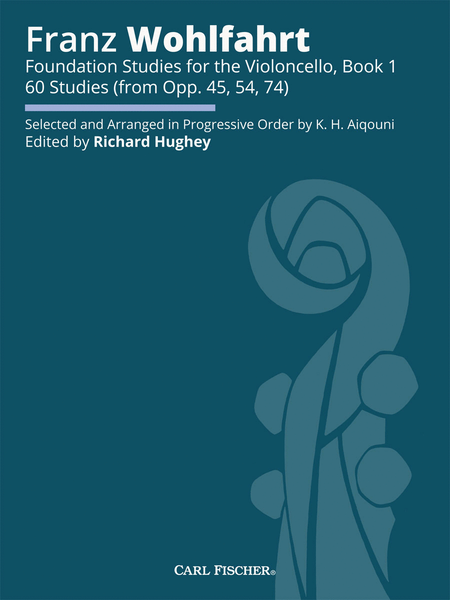Foundation Studies for the Violoncello, Book 1
60 Studies (from Opp. 45, 54, 74)
-
Ships in 1 to 2 weeks
Details
Description
SKU: CF.BF128
60 Studies (from Opp. 45, 54, 74). Composed by Franz Wohlfahrt. Edited by Richard Hughey. Arranged by K Aiqouni. Score and part(s). With Standard notation. 56 pages. Carl Fischer Music #BF128. Published by Carl Fischer Music (CF.BF128).ISBN 9781491153413. UPC: 680160910915.
Wohlfahrt’s Foundation Studies have long been successful tools forviolinists and violists in mastering the technical difficulties of theirinstruments. Originally conceived for a complete comprehension offirst position on the violin and viola, Richard Hughey presents thisnew edition for cello students. Transcribing these etudes for the cellopresents new challenges for the performer. Particular passages, forexample, require the student to make use of the second and eventhird positions. The fingerings chosen for these passages reflectthese shifting positions in a coherent and logical way. Trainedcomprehensively in both cello and conducting, Hughey shares hiswealth of experience and knowledge in Wohlfahrt’s FoundationStudies for the Violoncello.
The violin etudes and exercises of Franz Wohlfahrt havebeen and continue to be used by violin and recently violateachers the world over. Franz was the son of HeinrichWohlfahrt (1797, Kößnitz–1883, Leipzig), a noted pianoteacher who also published many studies for piano thatwere very successful with younger students. Heinrichdeveloped a keen sense for the pedagogical development ofchildren and composed excellent studies accordingly. Withthe education of his sons Robert (1826, Weimar–deathdate unknown) and Franz (1833, Frauenpriesnitz–1884,Leipzig), he passed these pedagogical abilities to the nextgeneration.In the preface to his Violin Studies Opus 45, FranzWohlfahrt wrote:The study of the violin presents certain difficultiesfor beginners which are frequently the cause of a suddendecrease in the pupil’s zeal and ambition, even before he hasmastered the first fundamentals.The blame for this is commonly laid on the teacher,who is called incapable or negligent; losing sight of thefact that the pupil began his studies without the slightestnotion, not merely of the difficulties to be encountered,but also of the regular and diligent effort indispensable forovercoming them.It is important, therefore, to smooth these first severitiesby showing their usefulness and making them agreeable; tothis end my Violin Method was published and the presentexercises have been written, which latter may be consideredas forming a supplement to the former.If practiced carefully and intelligently, they will serve asa solid foundation for the technique of any player ambitiousto become an artist.These studies have been successful tools for violinistsand violists to begin to master the technical difficulties oftheir instruments. Clearly conceived for a more completecomprehension of the use of the first position on the violinand similarly for the viola, presenting these etudes forthe cello presents a new challenge. As ongoing violinistsand violists can use the fourth finger to play the note ofthe next higher open string, this is not possible on thecello. To perform these exercises on the cello, particularlyreaching the “E” on the A-string, requires the studentto make use of the second and even third positions. Thefingerings chosen for these passages reflect the necessityof shifting to these positions. This is of great advantage,as a new set of studies now can be used by the studentto practice shifting to and from those positions and thusincreases technical proficiency in the second and thirdpositions of the cello.

 Share
Share